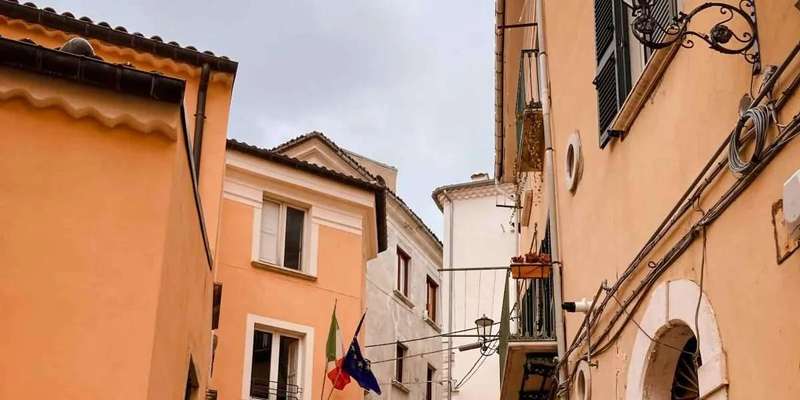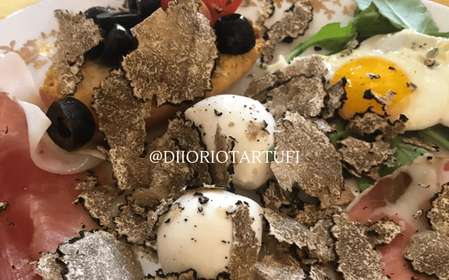- Home
- Useful Tips
- Exploring Molise region from Campobasso
Most travelers overlook Molise, Italy's undiscovered region, leaving them trapped in crowded tourist circuits. With 83% of international visitors never venturing beyond Rome or the Amalfi Coast (Italian Tourism Board, 2023), those who do arrive unprepared face confusing transit connections and miss authentic experiences. The frustration of navigating rural roads without local knowledge means wasted vacation days and superficial encounters. This isolation paradoxically creates opportunities – medieval villages like Pietrabbondante remain crowd-free, family-run trattorias serve $15 tasting menus, and shepherds still practice transhumance along ancient trails. But without strategic planning, you risk circling Campobasso's ring road while the real Molise stays hidden behind language barriers and outdated travel advice.


Escaping Campobasso's transport trap to reach Molise's heart
The first challenge visitors face is transitioning from Campobasso's transport hub to Molise's scattered attractions. While the regional capital has direct trains from Rome, the real magic lies in villages accessible only by infrequent buses or car. Locals know the 7:15 AM SATI bus to Agnone delivers you to Italy's last remaining bell foundry by opening time, while afternoon services strand travelers. Those renting cars should request compact models – medieval centers like Frosolone have streets barely wider than a Fiat 500. For a stress-free alternative, Wednesday mornings see shared taxis departing from Piazza Vittorio Emanuele, where farmers commuting to high pastures welcome paying passengers. This unofficial system reaches remote areas like Capracotta's ski slopes without requiring you to navigate Molise's serpentine SS647 highway alone.
Timing your visit for festivals and seasonal flavors
Molise reveals its true character through cyclical traditions most tourists miss. Arriving in September means joining the 'Ndocciata torchlight procession in Agnone, where thousands create rivers of fire through the streets – a spectacle that dwarfs commercialized Tuscan festivals. Spring visitors gain access to mountain huts during the annual cheese pilgrimage, when shepherds guide hikers to taste caciocavallo straight from aging caves. Even winter offers unique advantages: the Carrese di Ururi sled race transforms February's snow into a thrilling local competition. Restaurant schedules follow these rhythms too; trattorias near Campomarino close August afternoons but stay open late during olive harvest moons. By syncing your itinerary with these events rather than standard tourist seasons, you'll experience Molise's living culture rather than just its empty architecture.
Sleeping like a local in restored masserie and agriturismi
Molise's accommodation options reward those who venture beyond Campobasso's business hotels. Converted farmhouses like Tenuta Collefagiano offer stays where your morning espresso comes with views of sheep grazing beneath the Matese mountains. The key is identifying authentic agriturismi – look for places producing their own cheese or oil, such as Fattoria Di Vaira where rooms sit beside active buffalo mozzarella workshops. Budget travelers can target convents-turned-guesthouses; the Monastero di Santa Maria delle Grazie in Vinchiaturo provides simple rooms with frescoed ceilings for under €60. These stays solve two problems simultaneously: putting you near next-day attractions while providing genuine cultural immersion. Many hosts will map out scenic drives to sites like Saepinum's Roman ruins that avoid the region's notoriously poorly signed backroads.
Dining beyond truffles – Molise's undiscovered food trails
While neighboring Abruzzo gets credit for Italian mountain cuisine, Molise hides superior culinary secrets requiring local navigation. The trick is bypassing tourist-trap truffle menus in Campobasso for village spots like Osteria del Tempo Perso in Ripalimosani, where nonnas hand-roll cavatelli pasta with wild broccoli shoots. Morning food markets reveal regional specialties: Wednesday's Campobasso market sells ventricina sausage aged in walnut wood, while Termoli's docks offer dawn-fresh brodetto fish stew ingredients. For self-caterers, roadside signs reading 'Prodotti Locali' lead to farms selling just-laid eggs and pecorino wrapped in chestnut leaves. One insider move is timing lunch stops around factory visits – the Ferro dairy near Bojano welcomes visitors to taste burrata still warm from production at 11 AM daily, turning a snack into an unforgettable experience.
